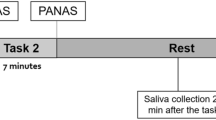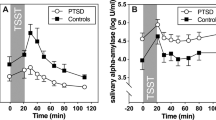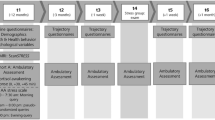Abstract
IN a series of research studies concerned with stress reactivity in adult male patients of subnormal intelligence quotient (I.Q.) and of known delinquent or psychopathic history, it has been established that stability, and possibly prognosis, are related to behavioural and physiological measures of stress reactivity1,2. Stress reactivity has been regarded as a continuous single variable, and it seems that instability corresponds with very high or very low reactivity, and stability with moderate reactivity, findings which are similar to those of Lykken3, for primary and neurotic sociopaths, and the views of Eysenck4,5 and Franks6,7, concerning introversion–extraversion and conditionability. In general, physiological measures, such as the conditioning-rate of the galvanic skin response, correlate more highly with various social criteria than do behavioural measures. This is for three reasons: (a) the physiological techniques reduce extraneous stimulus and response factors to a minimum; (b) the techniques are applicable to subjects of quite low I.Q., for example, down to 60; (c) the responses usually indicate a required range of scores from unreactivity to high reactivity.
This is a preview of subscription content, access via your institution
Access options
Subscribe to this journal
Receive 51 print issues and online access
$199.00 per year
only $3.90 per issue
Buy this article
- Purchase on Springer Link
- Instant access to full article PDF
Prices may be subject to local taxes which are calculated during checkout
Similar content being viewed by others
References
Tong, J. E., J. Ment. Sci., 105, 935 (1959).
Tong, J. E., and Murphy, I. C., J. Clin. Psychol. (in the press).
Lykken, D. T., J. Abnorm. Soc. Psychol., 55, 6 (1957).
Eysenck, H. J., J. Ment. Sci., 101, 28 (1955).
Eysenck, H. J., J. Ment. Sci., 105, 61 (1959).
Franks, C. M., J. Abnorm. Soc. Psychol., 52, 143 (1956).
Franks, C. M., Brit. J. Delinq., 6, 192 (1956).
Davis, D. R., “Pilot Error: Some Laboratory Experiments” (H.M. Stationery Office, 1948).
Venables, P. H., Brit. J. Psychol., 46, 2 101 (1955).
Venables, P. H., J. Gen. Psychol., 55, 199 (1956).
Anthony, H. S., Nature, 183, 343 (1959).
Conrad, R., Brit. J. Indust. Med., 8, 1 (1951).
Author information
Authors and Affiliations
Rights and permissions
About this article
Cite this article
TONG, J., MURPHY, I. & ADAMS, F. Preliminary Psychomotor Stress Studies with Subnormal Psychopathic Subjects. Nature 187, 172–173 (1960). https://doi.org/10.1038/187172b0
Issue Date:
DOI: https://doi.org/10.1038/187172b0
Comments
By submitting a comment you agree to abide by our Terms and Community Guidelines. If you find something abusive or that does not comply with our terms or guidelines please flag it as inappropriate.



